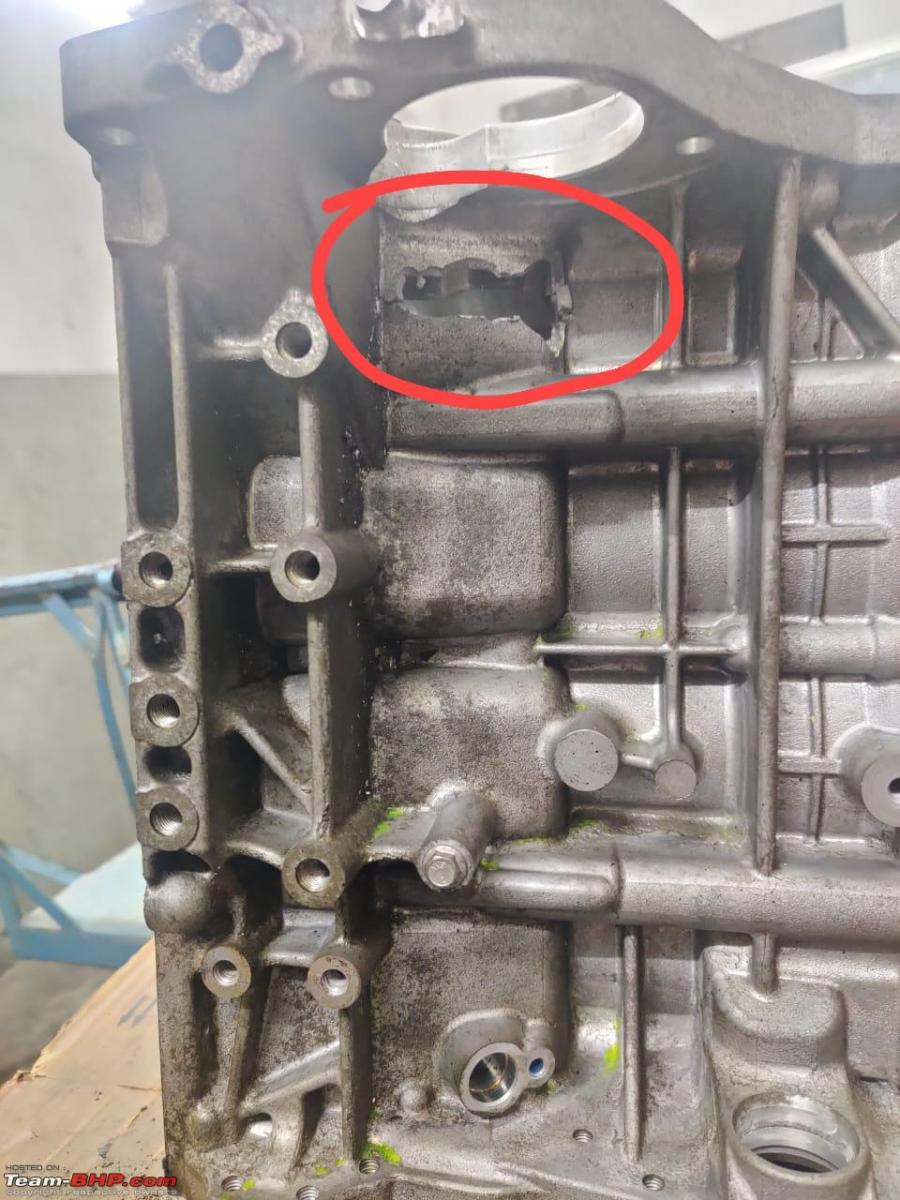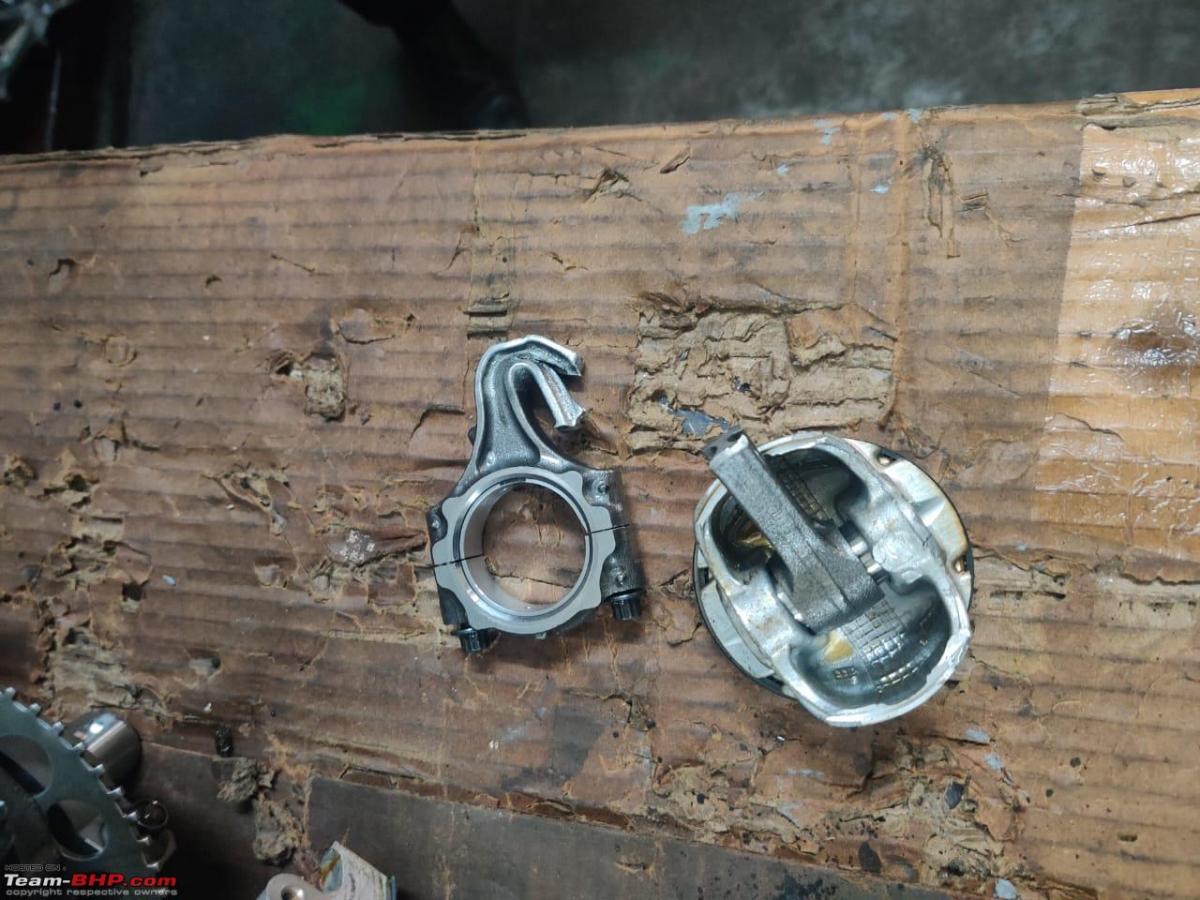News
3-yr-old Maruti Swift engine failure: Connecting rod breaks at 90 km/h
Initially, the insurance company denied any claims. In fact, even Maruti refused to accept any claims even though the car is under an extended warranty.
BHPian AutoAce recently shared this with other enthusiasts.
Today I find myself documenting the unfortunate incident that occurred with my 3-year-old Maruti Swift car that had clocked just 11,000 kilometers, and the inadequate after-sales service that I received from the company. Maruti Suzuki was once synonymous with reliability and quality, but it appears that the company has deviated from its path and is no longer upholding the high level of service that it was once known for.
The Incident
On the evening of January 12th, 2023, I was driving back from work on Outer Ring Road in Hyderabad, maintaining a steady speed of around 90 km/h. Suddenly, I heard a loud noise emanating from the front of my car, which initially sounded like a tyre bursting. But upon closer examination, I noticed smoke wafting out from under the bonnet and engine oil dripping from the engine. Fearing the worst, I quickly pulled over to the side of the road on Outer Ring Road and arranged to have my car towed to Maruti Authorised Service Center for repairs.
Disappointing Experience
I had my car covered under both Extended warranties and had taken the “Engine Protect” rider in my Vehicle Insurance. The insurance was also taken from Maruti Insurance.
Initially, I had claimed insurance under the engine protect rider, but the same was denied as there was no external damage to the car. After that, I went for a claim under warranty and the engine was dismantled. It was found that one of the Connecting rods had broken and damaged the engine block.
Maruti refused the claim under warranty, stating that it was a hydrolocking case and water had entered the engine without providing any proof. This was puzzling as it was the dry season and I had not entered any waterlogged areas. Moreover, there were no watermarks on either the air intake or exhaust side. I denied paying any money and asked them to provide a detailed investigation report or cover the repairs under warranty.
Later Maruti arranged for the insurance survey again, and this time, due to pressure from Maruti, the insurer (HDFC Ergo) approved 50% of the claim amount. Despite this, I made it clear that I would not bear the remaining 50% and that Maruti had to cover it. Finally, Maruti paid some portion, and I had to pay Rs. 10000, which I reluctantly paid as I did not want the issue to linger any further.
Finally, The engine block, piston & rings, and valves were replaced, while the crankshaft was checked for damages, but there was no damage, so it was not replaced.
Conclusion
Despite having the car covered both under warranty and Insurance, still I had to struggle a lot and after a lot of deliberation, the cost was shared by the Insurance company and Maruti and I also had to make payment more than my actual liability (I was liable to pay for consumables only). And for covering a portion of the amount also, the company behaved as if they are doing me a favor and they are doing it for “goodwill”.
It is my hope that this blog post serves as a warning to potential Maruti Suzuki customers, and that the company takes immediate action to improve its after-sales service. Maruti Suzuki was once a name that stood for reliability and quality, but it seems that the company has lost its way and is no longer providing the same level of service that it used to be known for. I hope that Maruti Suzuki will take this matter seriously and resolve it promptly so that customers like myself can have confidence in the company once again.
In the end, I'm unsure if I should feel relieved for paying only Rs 10,000 despite the initial rejection of my warranty and insurance claims or disappointed for paying more than my actual liability despite having taken all possible cover.


Here's what BHPian Chevyspark had to say about the matter:
Something is fishy from your side, as only 2 photos are provided. No odometer reading, no oil sump, oil filter or engine hood photo. Probable reason behind the bending of connecting rod is that the engine has been run without any engine oil. This is a classic example of oil leakage through the damage of oil sump or oil filter due to which oil got leaked and the engine ran dry. Ultimately engine block blew by connecting rod. Manufacturer is having no fault in this.
Here's what BHPian pkulkarni.2106 had to say about the matter:
I am very sure that Maruti would have found out if what you say was the case. And obviously, they would not have borne any portion of the repairs. Given the fact that the manufacturer has (reluctantly) paid for close to 40-45% of the repairs, they must have found out the root cause/problem & it must be something else.
Here's what BHPian PratikPatel had to say about the matter:
Maruti is right in its diagnosis of hydro locking. Contrary to what most people seem to think the word ‘hydro’ in hydro locking is not synonymous with ‘water’. Hydro means any liquid. A hydro lock happens when the volume of liquid that enters the cylinder is greater than the volume of the cylinder at end of the stroke. As the liquid is not compressible the piston cannot complete the stroke and the forces & momentum generated will either stop the engine from rotating or will cause mechanical failure as it has in this case.
There is a lot more to this story than is being told here. The state of the connecting rod shows the amount of mechanical force it’s been subjected to. There is a lot of background story that is missing out here. What exactly has been done with this car before this happen has relevance to why this happened.
Here's what BHPian Jeroen had to say about the matter:
As others mentioned, it is not due to oil starvation. I doubt hydrolock can happen with a running engine due to a head gasket failure. Head gasket failure usually results in a small amount of cooling liquid that won’t cause hydrolock.
You can easily test the cooling liquid for exhaust contamination. If there is no contamination, it can not be the head gasket. Usually, a test as simple as a pH test will suffice.
Whenever I have dealt with a blown head gasket it was always possible to tell where the leak/blow-by took place when you remove the cylinder head carefully.
I think something got sucked into the inlet valve, or there was a problem with the valve train, and or distribution belt/chain.
Given the state of the piston rod, I would also suspect damage to the cylinder horloges and obviously the valve(s). Ask them for images of the underside of the cylinder horloges and top and the valves and cam lobes and distribution belt/chain.
Good luck
Check out BHPian comments for more insights and information.













.png)





